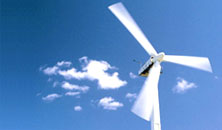Most ad agency creative departments, with a few rare exceptions, have still not quite gotten their heads around how to transfer their big concept to the small screen. One of the key reasons for this is that use of online channels requires a certain level of technical knowledge and expertise that go beyond the use of fat crayons and flip pads. That said, just as a client doesn't need to know what brand of video tape their TV advert was shot to, the client shouldn't need to worry about what technology works best on what sites – or what brand of crayons were used.
Key to obtaining engaging results is the client and the quality of the relationship that they hold with the agency. Equally important in this value chain is the relationship that the agency holds with the publisher and how they work together to generate the best return for the client. The client and agency understand the brand and the publisher's agent understands not only the needs of the marketer, but the audience dynamics and what technology works best. A very good example of this is the recent ICAN Fire Safety ad for the National Safety Council that ran as a takeover advert exclusively Eircom.net. An advert of this type would usually be refused out of hand because the Eircom.net homepage is one of the most visited pages in Ireland and it could result in many hundreds, if not thousands, of pissed off customers. It's fine to engage the user but you don't want to interrupt and irritate the user.
However, because it was deemed to be a socially responsible, time-sensitive, integrated campaign; and perhaps more importantly because the agency ICAN consulted with us from the initial concept stages, right through development to coding the takeover advert, we were able to advise as to what would work best on the site given our knowledge of the audience and the requirements of the technology - and where we'd be able to place it. This enabled us to optimise the campaign resulting in a very happy client and, this is a first for us, Eircom.net didn't receive one single complaint. In-fact, the call centre was inundated with complementary calls, and there were other organisations calling, asking could they perhaps run similar adverts.
But don't get carried away with the large intrusive formats – less is still more! It's one thing to have the most technologically sophisticated advert possible - but if you want to reach all users all of the time, we currently advise running low tech ads that don't require players, plug-ins or the latest browser running on high octane bandwidth. This minor Damascus moment came about as a result of a conversation I had with a media buyer who remarked, "Your homepage reminds me of Las Vegas", which his clients perceived to be a problem because dozens of highly animated banner ads vied aggressively for attention.
Taking onboard the comment Eircom.net commissioned usability tests and focus group interviews. A number of home page designs with different ad formats, sizes and messages were presented. None of the banner ads were animated. All of the banner ads featured the company name/logo. A text-link message appeared below the company logo offering a special offer/call to action by the advertiser. The banner ads were rotated so that each time a customer accessed the home page, the ads appeared in a different order. As a result of the button changes, homepage download time decreased by 6 seconds. The key findings were as follows:
-
91% of the respondents "did not mind" having the ad buttons on the home page.
-
82% of the respondents said that they preferred the static ads, finding them "more informational" and less distracting.
-
69% of the respondents said that they were "more likely" to click on the ad because of the text link.
-
On the home page where the ads were rotated, 72% of the respondents were "more aware" of the banner ads on subsequent visits to the home page.
-
83% of the respondents noticed a "significant difference" in the home page speed.
-
Less than 5% of respondents found the ads "intrusive" or "annoying".
Evidently lowest common denominator creatives that don't sing and dance, ring bells or blow whistles, combined with client/agency/publisher partnerships built on trust and understanding can be key to launching innovative and creative online campaigns. They might not win awards - but they'll win clients and customers by virtue of their improved conversion rates alone. It's a fact that a lot of our time is often spent educating creative and media people beyond the small digital team that exist in most ad agencies, so that when they're out meeting and pitching ideas at senior client side people, they feel confident about suggesting online work – basically, if the main agency guys don't feel comfortable about online they won't bring it up – and if they don't feel comfortable about it, the result can be that it'll be very quickly crossed off the media plan - with a big fat crayon.

